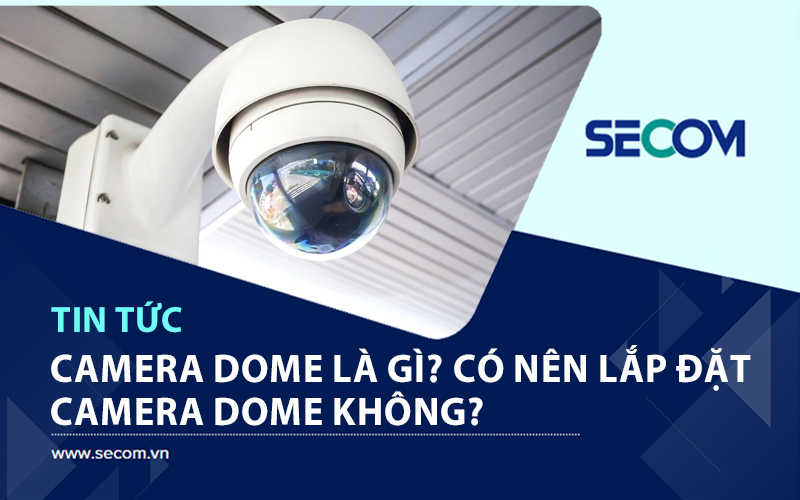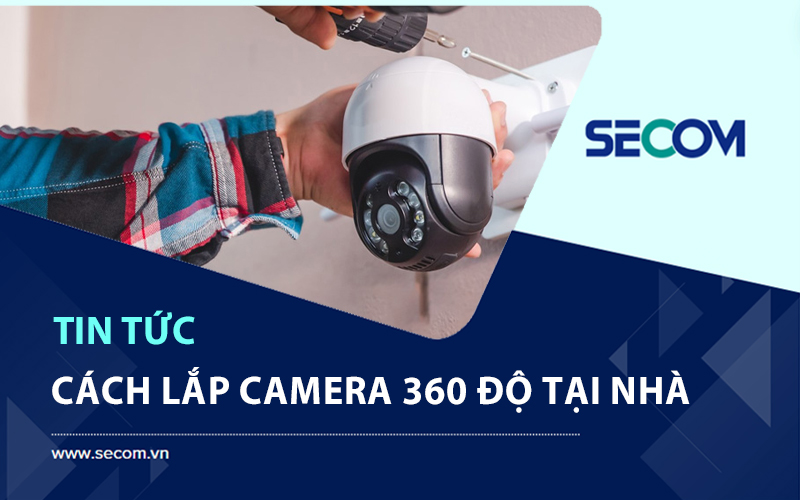- SECOM Tips
- May. 18, 2024
What is Infrared Sensor? Common Applications of Infrared Sensors?
In the 4.0 era, the electronic technology industry is increasingly developing and making great improvements, many advanced products are launched to improve the quality of human life. In particular, infrared sensors are a technology with high applicability in many fields of life. So what is infrared sensor technology and how does it work? Join SECOM to learn detailed information about the technology and applications of infrared sensors.
What is the concept of infrared sensor?
Infrared sensor has the English name Infrared Sensor and is abbreviated as IR Sensor. This is an automatic electrical device that uses capacitive electronics to measure and detect infrared radiation that cannot be seen with the naked eye. This type of radiation is produced when any object emits heat above 5 degrees K.
Classification of infrared sensors
Based on the function and sensitivity of the infrared sensor, products can be divided into 2 types, specifically:
- Active (AIR): The device automatically emits infrared rays when an object approaches and then reflects it back, thereby helping the sensor identify the object.
- Passive (PIR): The device can only detect radiation emitted from people, animals or heat sources, then convert the received signal into an alarm.
Structure and operating principle of infrared sensor
Currently, infrared sensors are gradually becoming popular and widely used thanks to their intelligent operating principle, bringing convenience and safety to users. So what is the structure and operating principle of the infrared sensor? Please follow the information mentioned below.
Structure of infrared sensor
In fact, infrared sensors work based on the principle of light sensing. Therefore, the structure of an infrared sensor is quite similar to a light sensor, including the following parts:
- Infrared LEDs play the role of emitting infrared light source.
- Resistors work to prevent excessive current from flowing through the LED.
- The infrared detector will receive the signal and detect infrared radiation then reflect it back.
- Electrical wires help connect the details to ensure the infrared sensor operates stably.
Operating principle of infrared sensor
With the above structure, what is the operating principle of the infrared sensor? In fact, the operating principle of infrared sensors is quite simple. Any object that comes close to the infrared sensor will generate a signal. At this time, the sensor device will receive signals into the processing circuit and create control or alarm effects when necessary.
For types of infrared sensors, the specific operating principles of each type are as follows:
- Active infrared sensor: The infrared source will use LED lights to emit infrared rays. When an object is detected within the sensor range, the light rays will reflect back and be received by the receiver. Next, the signal will be fed into the internal electronic circuit to process and determine the distance.
- Passive infrared sensor: The device works by receiving infrared rays emitted from surrounding objects by sensor elements. When the infrared ray and the sensor element collide, a corresponding voltage is generated and converted into a signal. At this time, the signal will be processed through electronic circuits to identify the object.
What are the advantages and disadvantages of infrared sensors?
As an advanced technology application, undergoing continuous research and development, infrared sensors help make human life more convenient and safer. Currently, infrared sensors are widely used in production, management activities, etc. thanks to outstanding advantages such as:
- Very sensitive to objects emitting infrared radiation in space. The infrared sensor can work well even in low light conditions.
- Determine the distance of the object emitting infrared rays accurately.
- The operation process is stable, minimizing incidents.
Besides its outstanding advantages, infrared sensors still have certain limitations:
- The device operates inefficiently in high ambient temperature conditions.
- Many dead corners exist within the scanning range of the device.
- Easily confused when detecting motion.
Some applications of infrared sensors
Infrared sensors were created to increase user convenience by automatically controlling devices to operate according to programming when detecting the movement of any object. So what is the typical application of infrared sensors? Below is a roundup of the most popular applications.
Turn lights on and off automatically
The infrared sensor will be linked to the light to control the light to turn on and off automatically when detecting motion or infrared rays emitted by humans. This helps create convenience in daily activities, while saving significant energy. Normally, this device will be mounted in front of the door or outside the hallway.
Anti-theft
Currently, infrared sensors are widely used in anti-theft devices and solutions, helping to improve security effectiveness. When any foreign object is detected entering the scanning range, the infrared sensor will detect and activate the connected audio device to signal an alarm. With anti-theft applications, infrared sensors will often be mounted in places that are easy to break into such as fences, gates, balconies,…
Helps open doors automatically
To create convenience and increase modernity, infrared sensors are also installed at the doors of commercial centers, conferences, etc. Accordingly, the device will be placed above the door for easy scanning. movements in and out, thereby executing appropriate automatic door opening/closing control commands.
Helps transmit control commands
TV and air conditioner remote devices have long been applied infrared rays to easily transmit signals to control devices at a distance. Based on this application, today’s smartphones are equipped with infrared sensors to help users control objects easily.
Helps create night vision devices
Infrared sensors can also convert ambient light photons into electrons, then chemically amplify them, thereby creating night vision devices, helping users see objects even in environmental conditions. The school has no light. Thanks to this operating principle, night vision devices often appear in security units such as police and soldiers.
Applications in astronomy
In the field of astronomy, infrared sensors are applied to manufacture a number of supporting devices such as telescopes, solid state detectors and sensor systems. Accordingly, a telescope with an infrared sensor will detect objects that emit heat or infrared rays, thereby helping astronomers easily observe objects in the universe.
Applied in the art of painting manipulation and restoration
Thanks to infrared sensors, archaeologists and researchers can easily analyze hidden layers in art paintings. Thereby, the characteristics of the painting such as material and age will be accurately identified.
Applications in a number of other important fields
In addition to the applications mentioned above, infrared sensors are used in other typical fields such as:
- Gas detector
- Optical modulation
- Water analysis
- Anesthesia testing
- Oil and gas exploration
- Automation
Instructions on how to set up the infrared sensor
To set up the infrared sensor, users will rely on the purpose of using the device. For active infrared sensors, you only need to adjust the distance of the transmitter and receiver so that the signal emitted by the object can be reflected back to the receiver correctly.
In case the infrared sensor device requires distance measurement, adjust the device’s sensitivity to suit the desired measurement distance. In addition, to ensure that you can scan the entire area to be observed and limit dead angles, set the width and scanning angle of the sensor. When using passive infrared sensors, users need to make sure the device is placed in the right position to receive signals from many different sources.
It can be seen that setting up the infrared sensor correctly will ensure quick sensor signal processing and perform necessary functions, thereby best meeting the user’s intended use. .
Notes when installing and using infrared sensors
Infrared sensors bring many benefits to human life, from applications in daily activities to more advanced fields such as medicine, astronomy,… However, to ensure the sensor After installation, in order for the transformer to function best and for its intended use, users should note the following factors:
- Mounting location: The mounting location must be able to scan the area to be monitored and avoid places with too strong light or electromagnetic interference, affecting data quality.
- Height: The height must be suitable for the area to be monitored to ensure accurate detection of objects and avoid unnecessary objects.
- Observation angle: Adjusted to suit the purpose of using the infrared sensor.
- Lighting conditions: Avoid installing the infrared sensor in locations that are too dark or too bright for the device to work well.
- Environment: In a humid environment or with too high a temperature, the device will not work well.
Thus, all of the above information has answered the question of what an infrared sensor is and the characteristics and applications of this technology in life. If you need advice on security solutions, please contact SECOM immediately for support and quick answers.

























